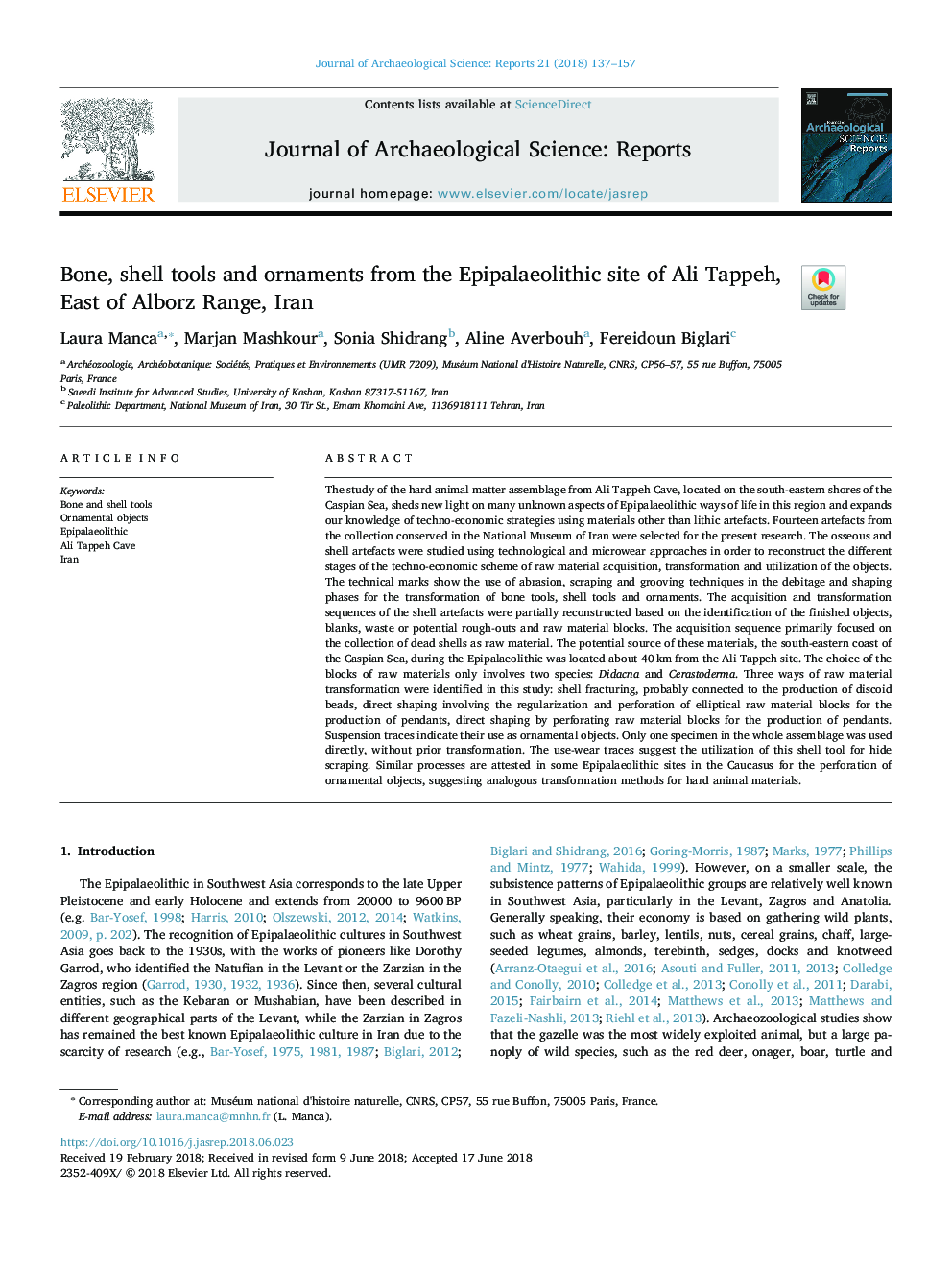| کد مقاله | کد نشریه | سال انتشار | مقاله انگلیسی | نسخه تمام متن |
|---|---|---|---|---|
| 7443944 | 1483922 | 2018 | 21 صفحه PDF | دانلود رایگان |
عنوان انگلیسی مقاله ISI
Bone, shell tools and ornaments from the Epipalaeolithic site of Ali Tappeh, East of Alborz Range, Iran
دانلود مقاله + سفارش ترجمه
دانلود مقاله ISI انگلیسی
رایگان برای ایرانیان
کلمات کلیدی
موضوعات مرتبط
علوم انسانی و اجتماعی
علوم انسانی و هنر
تاریخ
پیش نمایش صفحه اول مقاله

چکیده انگلیسی
The study of the hard animal matter assemblage from Ali Tappeh Cave, located on the south-eastern shores of the Caspian Sea, sheds new light on many unknown aspects of Epipalaeolithic ways of life in this region and expands our knowledge of techno-economic strategies using materials other than lithic artefacts. Fourteen artefacts from the collection conserved in the National Museum of Iran were selected for the present research. The osseous and shell artefacts were studied using technological and microwear approaches in order to reconstruct the different stages of the techno-economic scheme of raw material acquisition, transformation and utilization of the objects. The technical marks show the use of abrasion, scraping and grooving techniques in the debitage and shaping phases for the transformation of bone tools, shell tools and ornaments. The acquisition and transformation sequences of the shell artefacts were partially reconstructed based on the identification of the finished objects, blanks, waste or potential rough-outs and raw material blocks. The acquisition sequence primarily focused on the collection of dead shells as raw material. The potential source of these materials, the south-eastern coast of the Caspian Sea, during the Epipalaeolithic was located about 40â¯km from the Ali Tappeh site. The choice of the blocks of raw materials only involves two species: Didacna and Cerastoderma. Three ways of raw material transformation were identified in this study: shell fracturing, probably connected to the production of discoid beads, direct shaping involving the regularization and perforation of elliptical raw material blocks for the production of pendants, direct shaping by perforating raw material blocks for the production of pendants. Suspension traces indicate their use as ornamental objects. Only one specimen in the whole assemblage was used directly, without prior transformation. The use-wear traces suggest the utilization of this shell tool for hide scraping. Similar processes are attested in some Epipalaeolithic sites in the Caucasus for the perforation of ornamental objects, suggesting analogous transformation methods for hard animal materials.
ناشر
Database: Elsevier - ScienceDirect (ساینس دایرکت)
Journal: Journal of Archaeological Science: Reports - Volume 21, October 2018, Pages 137-157
Journal: Journal of Archaeological Science: Reports - Volume 21, October 2018, Pages 137-157
نویسندگان
Laura Manca, Marjan Mashkour, Sonia Shidrang, Aline Averbouh, Fereidoun Biglari,